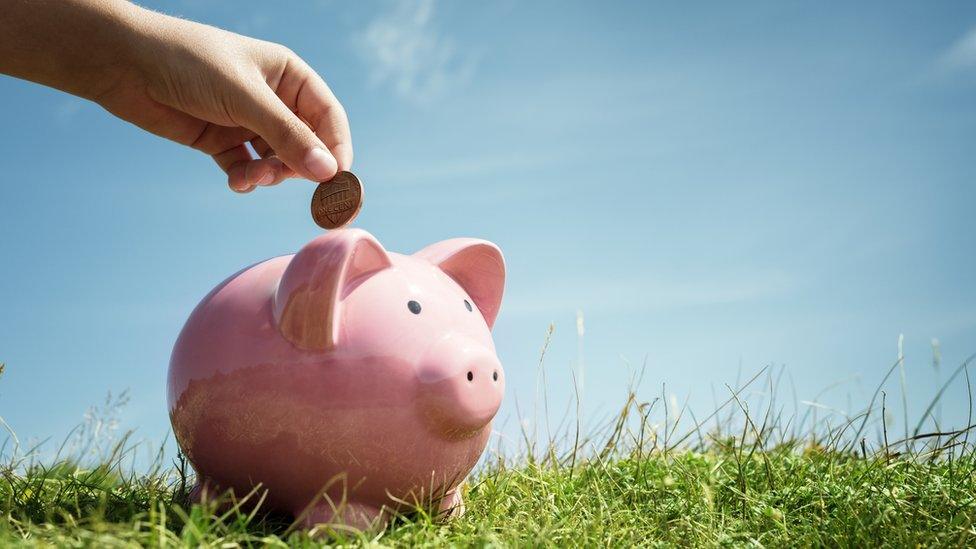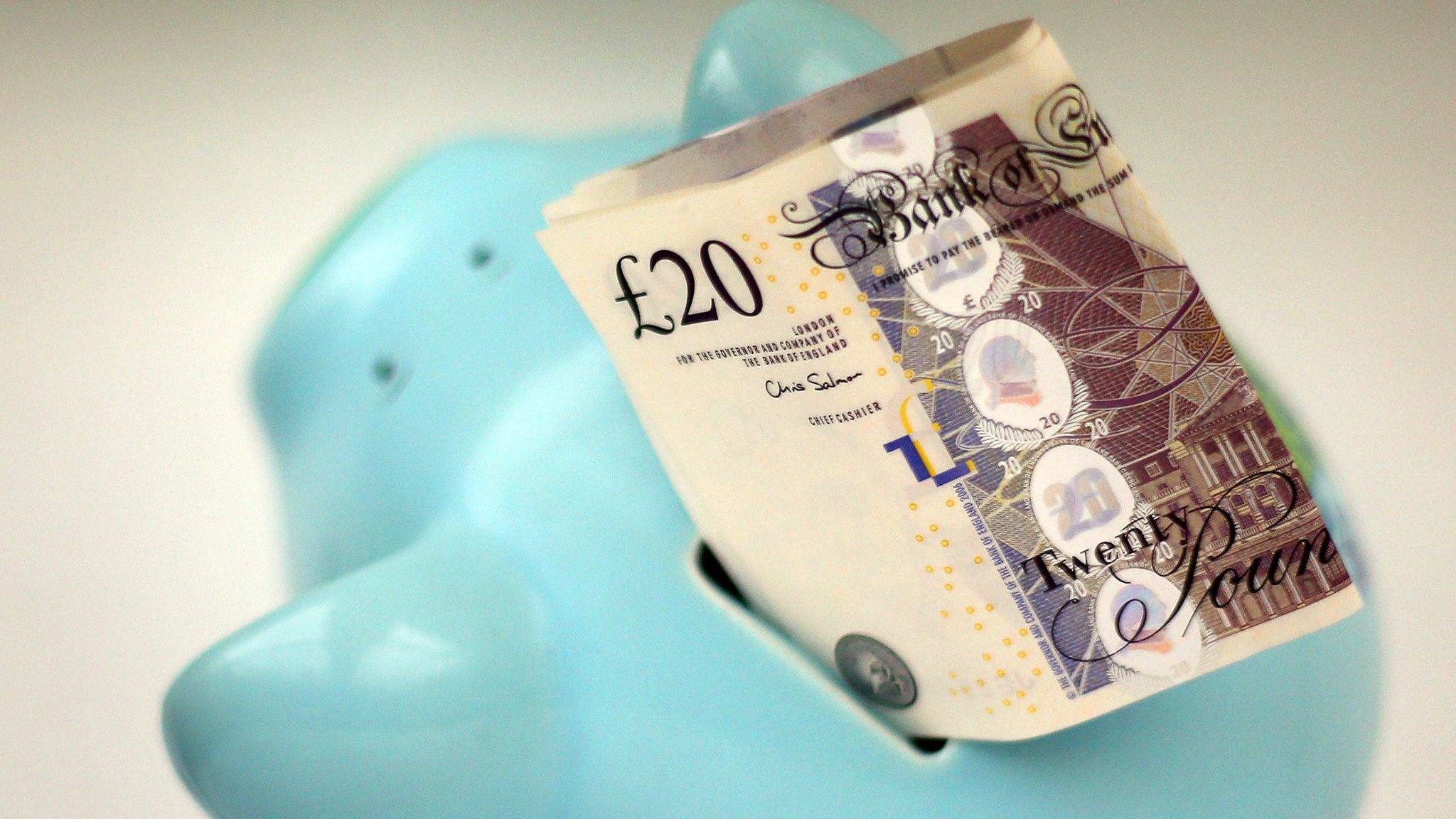Why are so many of us not saving for a rainy day?
- Published
- comments

There are two important statistics I regularly look at to see how people's finances are faring.
They point to whether people are feeling financially comfortable, or are finding their lives financially difficult.
They are both published by the Office for National Statistics, and are two of the most important economic indicators not just of the overall health of the economy but also the overall health of our finances and how we will pay, for example, for the big challenges ahead.
Like paying for our healthcare as we get old, or caring for our parents, or supporting our children.
The first statistic reveals whether the 27 million households in Britain are net borrowers or net lenders.
That is, are they borrowing money or spending their savings to make ends meet, or are they "lending" money to the economy in the form of pension contributions, savings and investments?
Between 1987 and 2016, households have been net lenders, even during times of recession when incomes tend to fall and unemployment rises.
Since 2016 they have been net borrowers - spending more than they are receiving in income - for 18 months on the trot. It's the first time that has happened since records began.
Stagnant incomes, families struggling to make ends meet, very cheap borrowing costs and ease of access to borrowed money - often just a swipe on an app away - have made taking on loans both necessary in some cases and certainly attractive.
Whilst savings rates as low 0.05% from some banks - yes, you did read that right - have made "putting money away" a proposition with much less apparent upside.
Savings habit
The second figure is the savings ratio. That is the proportion of our disposable income (what is left over after taxes) we save.
That figure is now at 4.1%, the third lowest since records began in 1963. In the 1990s, it was as high as 14.7%.
Put simply, we are losing the savings habit.
If there is a rainy day ahead, we are not preparing for it because for many people the rainy day is now.
This change in historic saving trends is fundamental and matters because borrowing can put people under financial pressure, particularly if interest rates are rising.
The next rate rise could come as early as next week when the Bank of England announces its latest decision.
Many economists believe Mark Carney and the Monetary Policy Committee will press the button on an interest rate rise of 0.25%.
That will take rates up to 0.75%, still very low by historical standards.
But nevertheless, borrowing rates will rise, making those loans and credit cards a bit more expensive.
Don't forget, in 2017 a Financial Conduct Authority survey found that many millions of people would find it difficult to pay an unexpected bill of £50 at the end of the month.
That shows how stretched many people's household finances are.
The increase in interest rates will mean a slight, and welcome, improvement in savings rates for consumers.
But it is likely to need a lot more than that to reverse a trend in saving - or lack of it - that has been revealed over the last few years.
- Published25 July 2018
